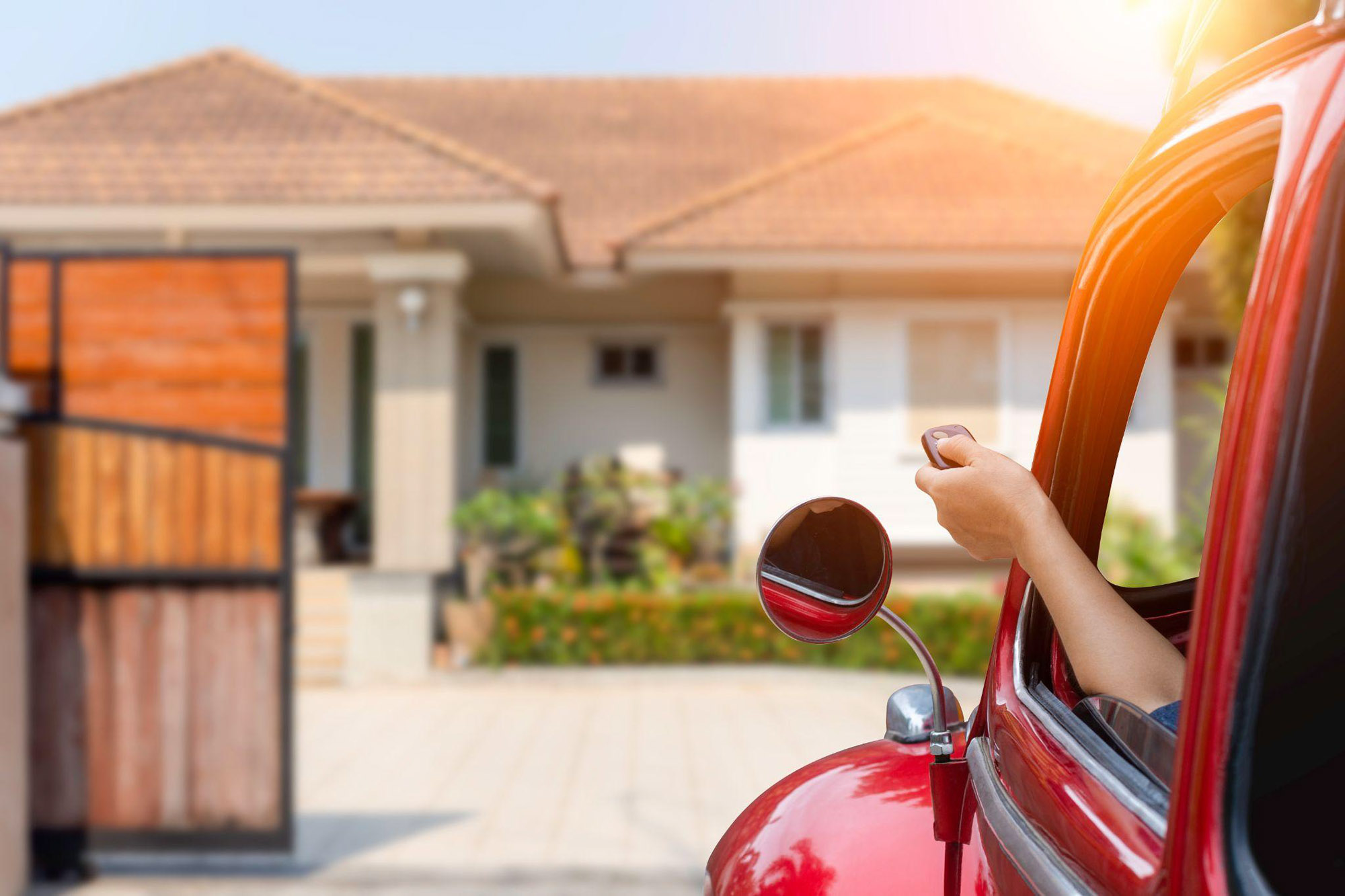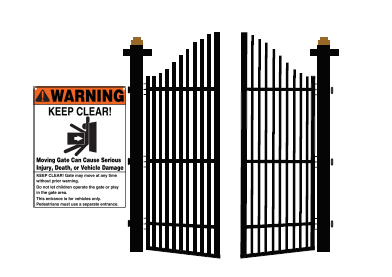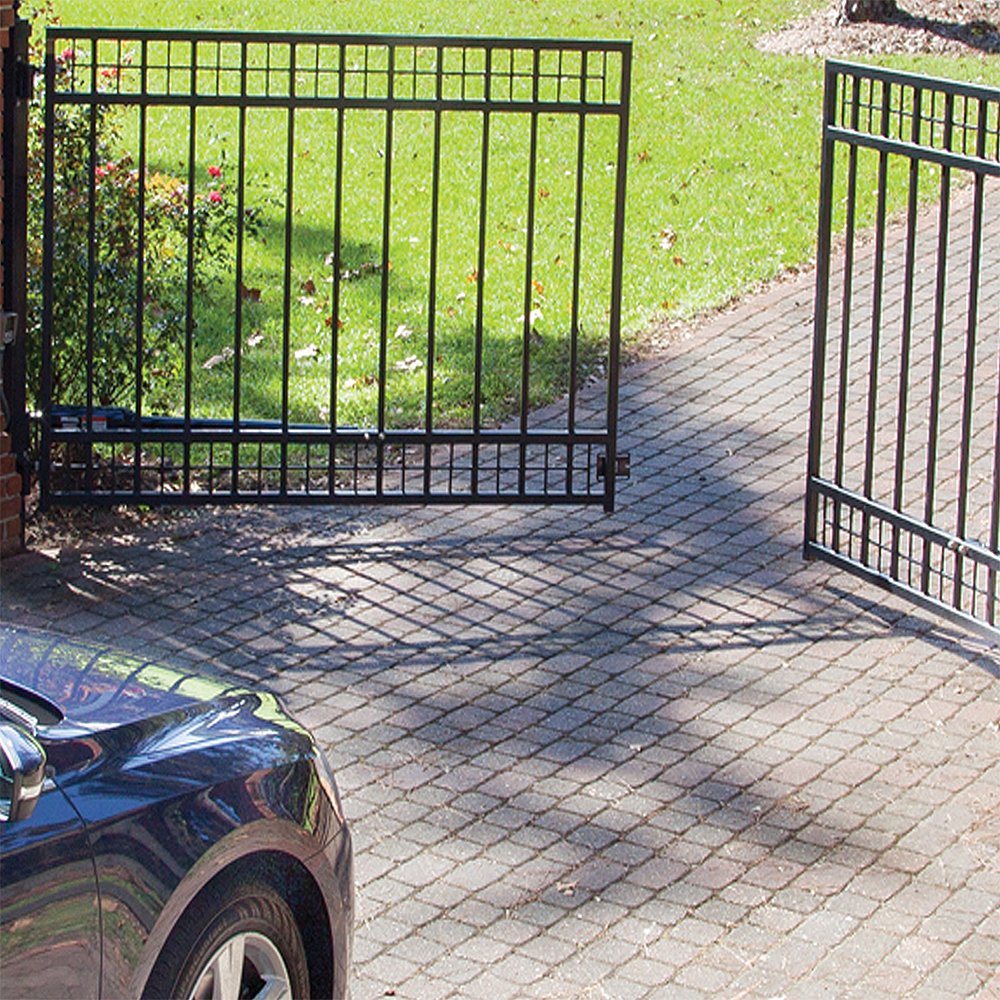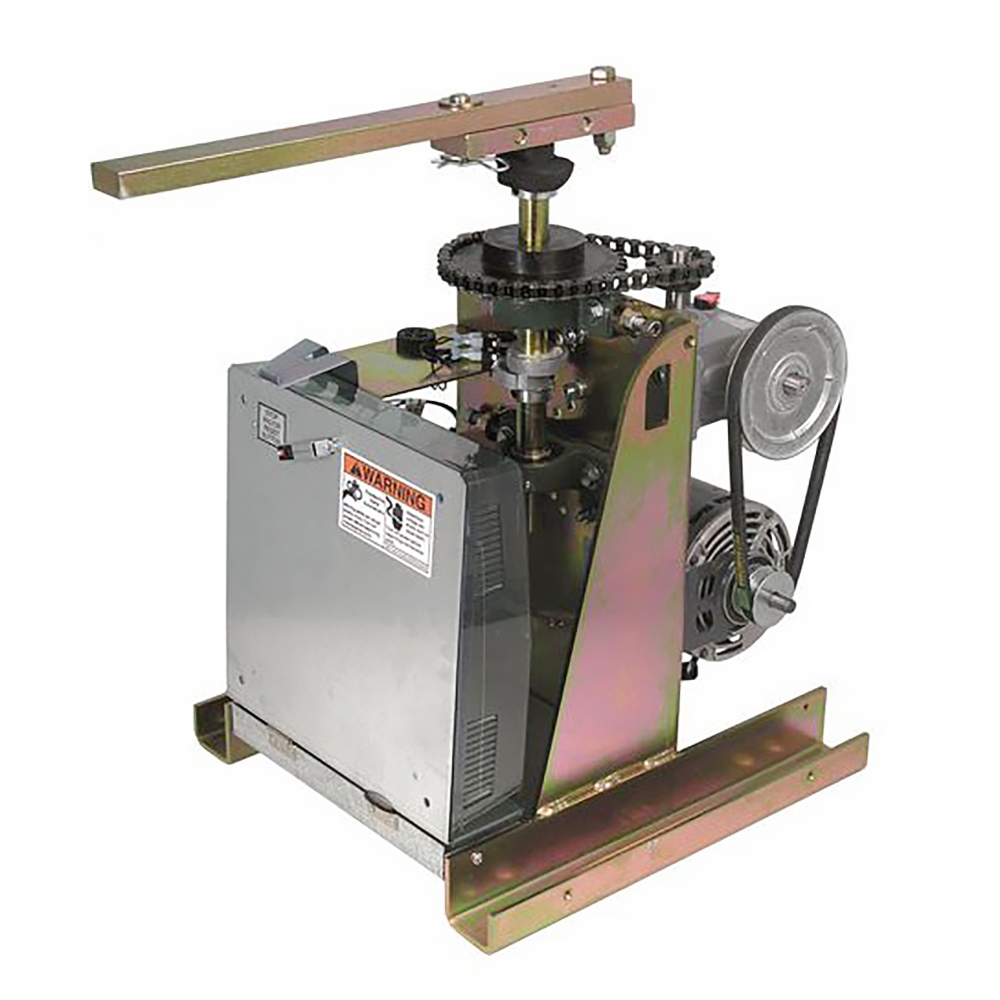How To Prevent My Gate From Closing On Me

While slide and swing gate operators, bring a lot of convenience and security, to your home or business they also have the potential to be dangerous machines if handled and operated carelessly or incorrectly. Like most automated machinery, they are made of heavyweight parts that move automatically without any human oversight. They operate on a fixed amount of power designed to be virtually unaffected by natural obstacles such as leaves, ice, and other small debris. Additionally, many tend to have a system meant to break through a particularly stubborn obstacle if a mound of ice or mud did not break on the first connection with the wheels.
Due to all these factors one can easily envision what could happen if an adult, child, or pet were to become one of those objects that become trapped within the gate’s moving system. To prevent this potential disaster from occurring it is important for all gate owners to exercise caution while using the operator especially when coming in close proximity to it. Additionally, there are Safety Standards in place that surround each model and class of operation, which prescribes all recommended ways to keep the operation of your automatic gate opener safe.
How To Safely Use Your Gate Operator
When installing your automatic gate opener, be sure to follow all installation instructions to ensure that your gate operator is correctly installed. It is highly recommended that a professional installer be used when installing your automatic gate. Should you hire a gate professional service, know that they will understand the ins and outs of these operators and how to best comply with safety standards. While hiring someone can be costly, the peace of mind of knowing your gate operator is properly installed and that all precautions have been taken to protect your loved ones is priceless.
All gate operators should have plenty of visible signage that warns people that the gate is automatic and there is the potential for becoming trapped or struct by the moving parts. These signs should also direct these individuals to a safe area where they are able to walk by the gate operator without encountering it. Access control devices meant to operate the gate should be located at least 6 ft (1.8m) beyond the moving parts of the gate, and there should be sensors in place that can detect foreign obstacles and prevent the gate from closing on those obstacles. There should be no protrusions along any gate section, and general tampering with this equipment is strictly prohibited. Be sure to visit our UL 325 Safety Standards page to learn more about what you must do to operate your automatic gate opener safely.
Safety Precautions For Sliding Gates
Be sure to cover all exposed rollers on sliding gates as well as securing the track they operate on to a solid surface. Your sliding gate should also have physical stops on each end of the track to avoid over-traveling in either direction. Finally, gaps between the gate and fixed objects or between vertical bars must be less than 2¼” (57mm).
Safety Precautions For Swing Gates
The biggest precaution that should be taken with swing gate operators is to ensure that the area where the gate opens does not receive a lot of traffic from pedestrians. For both styles of automatic gate operation, there must be a separate entrance near the automatic gate that is manually operated and meant for pedestrian use.
To truly keep your friends, family, and visitors safe from being injured by your automatic gate it is important to keep the area where the gate is located clear of any obstacles and to prevent anyone from going near the machine. If you feel uncertain about installing an automatic gate due to safety concerns review the UL 325 Safety Standards Rules and Regulations before purchasing your operator, and plan out your area of operation before proceeding. The consequences of mishandling this equipment can range from minor collisions to severe injury and even death, so ensure great care is taken in making the area and operation as safe as possible.

UL 325 Safety Standards:
- Gate Operator Types and Classes
- Each Gate Operator Type's Defined Entrapment Zones
- Requirements For Gate Construction (Refer To ASTM F2200)
- Requirements For Gate Installation (Refer To ASTM F2200)
- Minimum Quantity of Entrapment Protection Devices
- All Installed External Entrapment Sensors Must Be Monitored
- Instructional Warning Requirements
- Safety Warning Requirements
- Manufacturers Install Any Components Required For Monitoring




